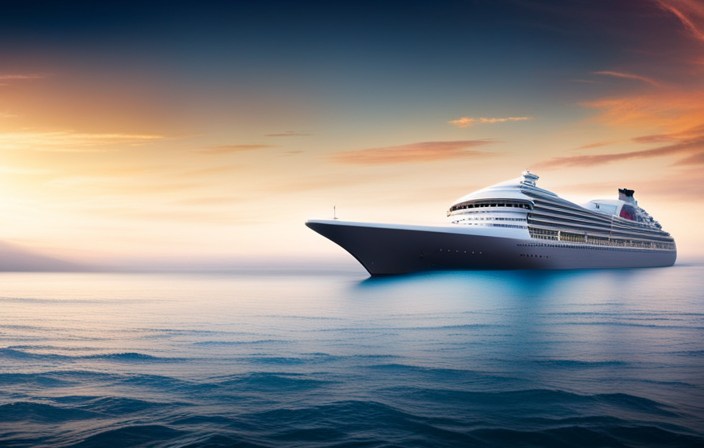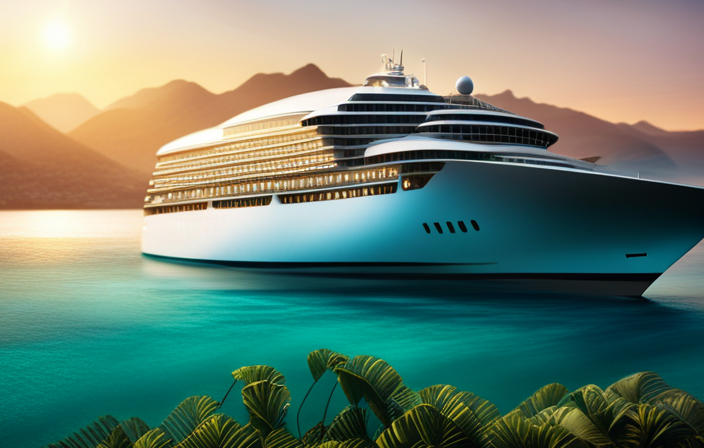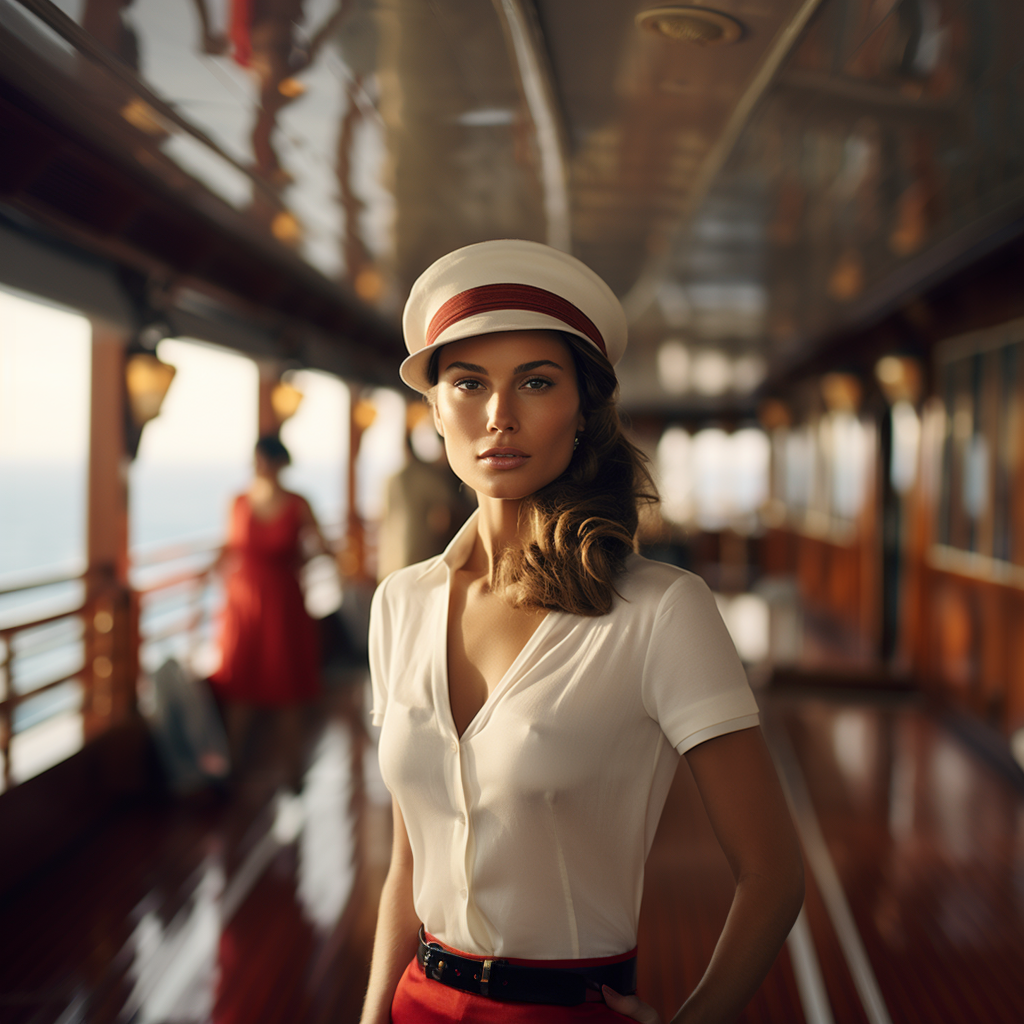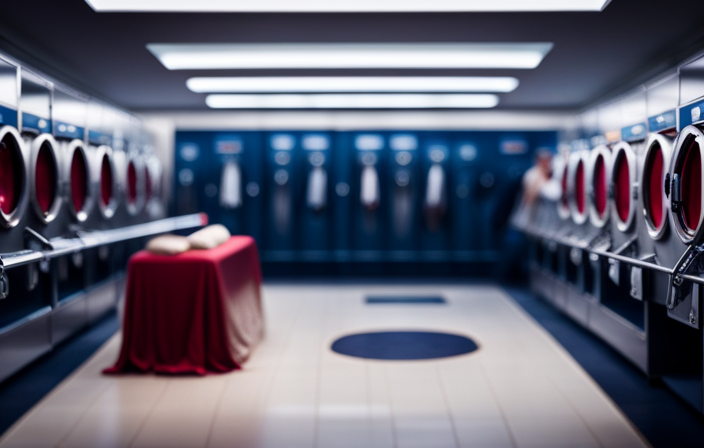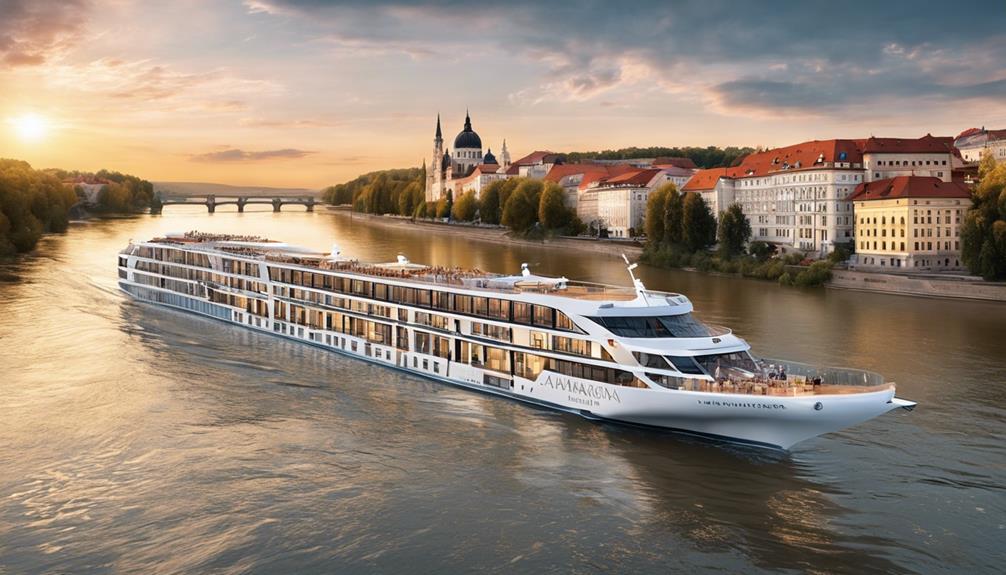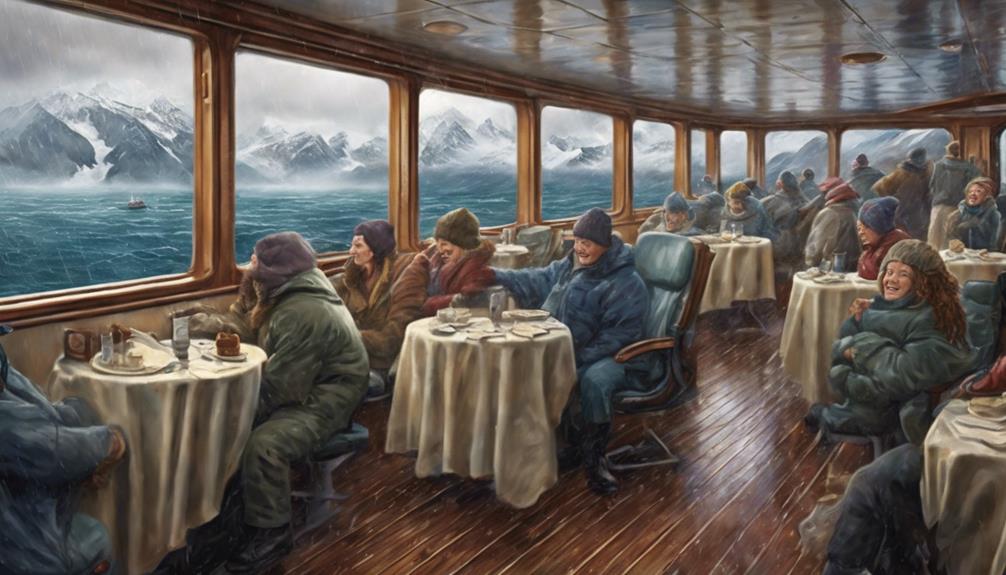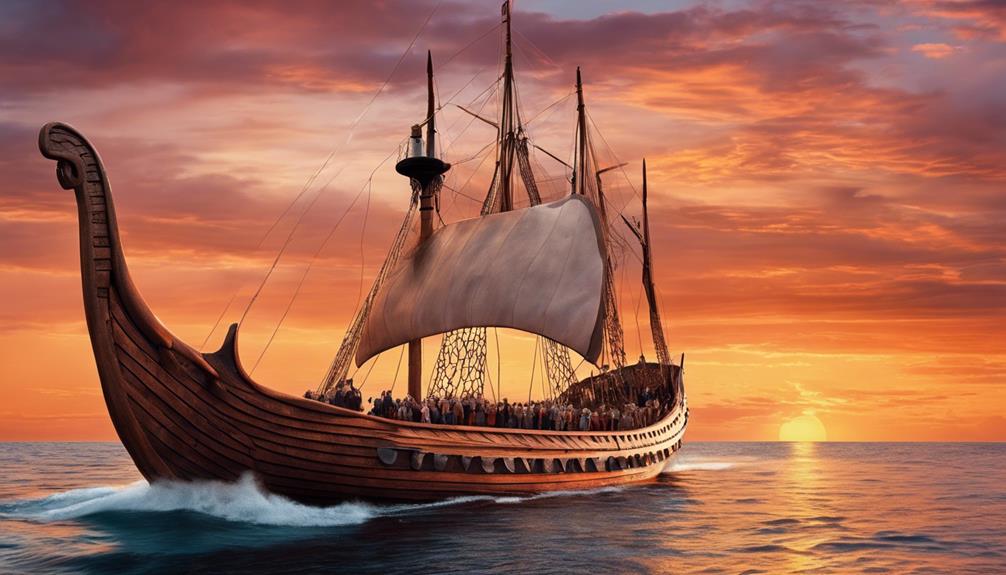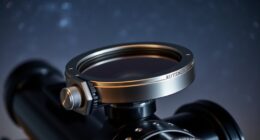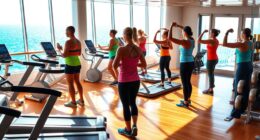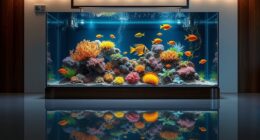Have you ever wondered what keeps cruise ships stable and upright, even when they face powerful waves and strong winds? Let me take you on a journey through the hidden marvels that support these magnificent vessels. It’s fascinating to discover the intricate systems and engineering marvels that maintain their stability.
Firstly, a cruise ship’s deep draft plays a crucial role in maintaining equilibrium. This means that the ship’s hull extends deep into the water, creating a lower center of gravity, which helps to counterbalance external forces.
Additionally, stabilizers are employed to minimize rocking and rolling motions, ensuring a smoother sailing experience for passengers.
The design of the hull is also meticulously crafted to enhance stability. Its shape, width, and distribution of weight all contribute to the ship’s ability to stay upright.
Furthermore, advanced navigation and positioning systems, operated by skilled captains and crew, play a pivotal role in maneuvering the ship and maintaining its stability.
Lastly, continuous maintenance and inspections are conducted to ensure structural integrity and safety.
So, next time you embark on a cruise adventure, marvel at the engineering wonders that keep these floating cities upright and steady on the open seas.
Key Takeaways
- Clear and precise communication is essential for coordination and executing emergency procedures on a cruise ship.
- The ship’s structural integrity and safety measures, including reinforced steel hull and watertight compartments, ensure safety in case of breach or fire.
- Safety measures for stability in rough waters, such as shielding passengers and maintaining ship strength, are crucial for a smooth voyage.
- The ship’s design, weight distribution, and advanced stabilization systems counteract the forces of waves and wind to maintain stability, with continuous maintenance and inspections playing a role in ensuring stability.
The Importance of a Deep Draft
The importance of a deep draft for cruise ships cannot be overstated. It is crucial for maintaining stability and preventing tipping over. Draft considerations play a significant role in ensuring the ship’s stability factors are met.
The draft of a ship refers to the vertical distance between the waterline and the lowest point of the vessel. Cruise ships require a deep draft to navigate through rough waters and counterbalance the weight of passengers and amenities on board.
By having a deep draft, the ship’s center of gravity is lowered, providing stability and reducing the risk of capsizing. However, it is essential to strike a balance between having a deep draft for stability and ensuring the ship can safely navigate in shallower waters.
This leads us to the subsequent section about the role of stabilizers in maintaining balance.
The Role of Stabilizers in Maintaining Balance
Utilizing stabilizers, cruise ships maintain their balance at sea. These specially designed devices reduce roll by up to 80%. Stabilizers play a crucial role in reducing the ship’s roll, pitch, and yaw motions, caused by the forces of wind and waves.
These devices are typically located on the sides of the ship. They consist of fins that can be extended or retracted as needed. When the ship encounters rough seas, the stabilizers are extended to increase their surface area. This provides more resistance against the rolling motion, effectively counteracting the forces acting upon the ship and helping to maintain stability.
It is important to note that passenger movement also affects ship stability. The shifting weight can impact the ship’s balance. In the subsequent section about the design of the hull for stability, we will explore how the shape and structure of the ship’s hull contribute to its overall stability.
The Design of the Hull for Stability
The shape and structure of the hull play a crucial role in ensuring a stable voyage at sea. The design of the hull is carefully engineered to minimize the effects of waves and wind, and to maintain balance even in rough waters. Here are some key aspects of hull design for stability measures:
- Bulbous Bow: A bulbous shape at the front of the hull helps to reduce drag and improve stability by deflecting waves.
- Flared Hull: The outward flare of the hull towards the top increases buoyancy and prevents excessive rolling.
- Hull Form: A deep V-shaped hull or a round-bottomed hull provides stability by displacing water and reducing the impact of waves.
- Bilge Keels: These long, flat plates on the sides of the hull help to dampen rolling motions.
The design of the hull, along with other factors such as weight distribution and ballast systems, contributes to the overall stability of a cruise ship.
Weight Distribution and Ballast Systems
To ensure a smooth and stable journey, cruise ships carefully distribute weight and employ ballast systems. Weight distribution plays a crucial role in maintaining the ship’s stability and preventing it from capsizing. Cruise ships are designed with a low center of gravity, which helps to keep them upright even in rough seas. The placement of heavy machinery, fuel, and other equipment is strategically arranged to evenly distribute the weight throughout the ship.
Additionally, ballast systems are used to adjust the ship’s weight distribution as needed. These systems consist of large tanks located at the bottom of the ship, which can be filled with water or emptied to shift the ship’s center of gravity. This allows for precise control over stability.
By managing weight distribution and utilizing ballast systems, cruise ships can ensure a safe and comfortable voyage.
Moving on to advanced navigation and positioning systems…
Advanced Navigation and Positioning Systems
With state-of-the-art navigation and positioning systems, cruise ships can effortlessly glide through the open waters, maintaining their course and ensuring passengers a smooth and enjoyable voyage.
These advanced navigation systems utilize a combination of technologies such as GPS, radar, and sonar to accurately determine the ship’s position and heading. The GPS system provides precise global positioning information, while radar helps detect and track other vessels or potential obstacles in the ship’s path. Additionally, sonar technology allows for underwater mapping, ensuring a safe passage through shallow waters or avoiding submerged hazards.
These highly sophisticated systems work together to provide real-time data and allow the ship’s crew to make informed decisions regarding navigation adjustments. By continuously monitoring and adjusting the ship’s position, cruise ships can safely navigate even the most challenging routes.
Moving seamlessly into the next topic, weather monitoring and response systems play a vital role in ensuring the safety and comfort of passengers.
Weather Monitoring and Response Systems
Utilizing cutting-edge technology, cruise ships employ advanced weather monitoring and response systems to ensure the safety and comfort of passengers.
These systems rely on accurate weather forecasting to anticipate and prepare for adverse weather conditions.
By monitoring weather patterns, such as wind speed, wave height, and precipitation, the ship’s crew can make informed decisions regarding the ship’s route and speed adjustments.
In the event of severe weather, the ship is equipped with emergency response procedures to mitigate potential risks.
These procedures may involve altering the ship’s course, seeking shelter in calmer waters, or activating stabilizing measures to counteract the effects of rough seas.
The captain and crew play a crucial role in implementing these measures, utilizing their expertise to maneuver the ship safely through challenging weather conditions.
Transitioning to the subsequent section, the captain and crew’s expertise ensure the ship’s stability and navigation even in the face of adverse weather conditions.
The Role of the Captain and Crew in Maneuvering the Ship
Navigating through challenging weather conditions requires the captain and crew to rely on their expertise and quick decision-making skills. The captain’s expertise plays a crucial role in maneuvering the ship safely through rough waters. Here are four reasons why the captain and crew’s coordination is vital in these situations:
-
Situation assessment: The captain’s knowledge and experience allow them to assess the current weather conditions accurately. This assessment helps them make informed decisions about the ship’s course and speed.
-
Seamanship skills: The crew’s ability to handle the ship’s controls, such as the helm and propulsion systems, is essential for maintaining stability and control in adverse weather.
-
Effective communication: Clear and precise communication between the captain and crew ensures everyone is on the same page, enabling coordinated actions to respond swiftly to changing conditions.
-
Emergency response: In case of emergencies, the captain’s expertise and the crew’s training enable them to execute appropriate emergency procedures promptly.
Mastering the art of maneuvering in challenging weather conditions paves the way for the subsequent section about structural integrity and safety measures.
Structural Integrity and Safety Measures
The ship’s structural integrity and safety measures are like the sturdy foundation and protective walls that shield passengers from the stormy seas.
The cruise ship’s design is a testament to the principles of structural engineering, ensuring its ability to withstand the immense forces exerted by the ocean. Safety regulations dictate the materials used and construction techniques employed, ensuring the ship’s strength and durability.
The ship’s hull, made of reinforced steel, is designed to resist bending and twisting forces, while its watertight compartments prevent flooding in the event of a breach. Additionally, a comprehensive system of fire detection and suppression is in place, further safeguarding the ship and its passengers.
These meticulous safety measures ensure that the ship is well-equipped to navigate rough waters and unforeseen challenges. As we delve into the impact of waves and wind on stability, we begin to understand the crucial role these measures play in maintaining a smooth voyage.
The Impact of Waves and Wind on Stability
As discussed in the previous section, the structural integrity and safety measures of cruise ships play a crucial role in their stability. However, another important factor that affects a ship’s stability is the impact of waves and wind. Cruise ships are designed to handle rough seas and adverse weather conditions, ensuring the safety and comfort of passengers and crew. The impact of tides, which are caused by the gravitational forces of the moon and sun, can also affect a ship’s stability. To counteract these forces, cruise ships are equipped with advanced stabilization systems, such as stabilizer fins and ballast tanks, which help to reduce the rolling motion and maintain the ship’s balance. These systems work in tandem with the ship’s design and weight distribution to ensure that it stays upright even in challenging conditions. Continuous maintenance and inspections for ship stability are essential to ensure the ongoing safety and performance of the vessel.
Continuous Maintenance and Inspections for Ship Stability
To keep your cruise experience smooth and enjoyable, it’s crucial to ensure the continuous maintenance and inspections of ship stability. Maintaining the stability of a cruise ship is a complex and ongoing process that involves regular inspections and maintenance procedures. Here are three key aspects of continuous maintenance and inspections for ship stability:
-
Hull Integrity: Regular inspections are conducted to check the condition of the ship’s hull. This includes examining the hull for any signs of damage, corrosion, or wear and tear. Any issues found are promptly addressed to maintain the structural integrity of the ship.
-
Ballast Systems: Cruise ships use ballast systems to control stability. These systems are regularly inspected to ensure they are functioning properly. This involves checking the ballast tanks, valves, and pumps to ensure they are in good working condition.
-
Stability Calculations: Cruise ships undergo stability calculations to determine their stability in different conditions. These calculations take into account factors such as passenger loads, cargo distribution, and weather conditions. Regular checks and adjustments are made to ensure the ship remains stable and safe.
Continuous maintenance and inspections are essential for maintaining the stability of cruise ships, ensuring a safe and enjoyable experience for passengers.
Frequently Asked Questions
What are the amenities and entertainment options available on a cruise ship?
On a cruise ship, passengers can enjoy a variety of amenities and entertainment options. These include spa services for relaxation and rejuvenation, as well as onboard shopping for souvenirs and luxury goods.
How do cruise ships generate power to run their facilities and equipment?
Cruise ships generate power through onboard electrical systems. These systems consist of generators that convert mechanical energy into electrical energy, supplying power to run facilities and equipment on the ship.
Can passengers go fishing or swimming during a cruise?
Passengers are allowed to swim but fishing is restricted due to safety concerns. Swimming safety measures are in place to ensure passenger well-being. The context of cruise ship stability is unrelated to this topic.
What is the process for embarking and disembarking a cruise ship?
To embark on a cruise ship, passengers must check in at the terminal, provide identification, and go through security screenings. During disembarkation, passengers are given specific times to leave the ship and must follow instructions from the crew.
Are there medical facilities and emergency response systems on board cruise ships?
Yes, cruise ships have medical facilities and emergency response systems on board. The medical facilities are equipped to handle various medical emergencies, and the emergency response systems ensure timely and efficient response to any onboard emergencies.
Do Balcony Rooms on Cruise Ships Affect the Stability of the Ship?
Balcony rooms on cruise ships are indeed built to maintain the stability of the ship. The structural design and placement of the best balcony room cruise ship take into account the ship’s stability and ensure that the addition of balcony rooms does not compromise it.
Conclusion
In conclusion, the stability of cruise ships is not a matter of luck or chance. It is a result of meticulous design, engineering, and maintenance. The deep draft, stabilizers, hull design, weight distribution, and ballast systems all work together to ensure that the ship stays upright even in challenging conditions.
Advanced navigation systems and the expertise of the captain and crew also play a crucial role in maneuvering the ship safely. Continuous maintenance and inspections further guarantee the structural integrity and safety of these magnificent vessels.
So, the next time you embark on a cruise adventure, rest assured that every effort has been made to keep you safe and secure on the open seas.
Meet Asra, a talented and adventurous writer who infuses her passion for exploration into every word she writes. Asra’s love for storytelling and her insatiable curiosity about the world make her an invaluable asset to the Voyager Info team.
From a young age, Asra was drawn to the power of words and their ability to transport readers to far-off lands and magical realms. Her fascination with travel and cultures from around the globe fueled her desire to become a travel writer, and she set out on a journey to turn her dreams into reality.

